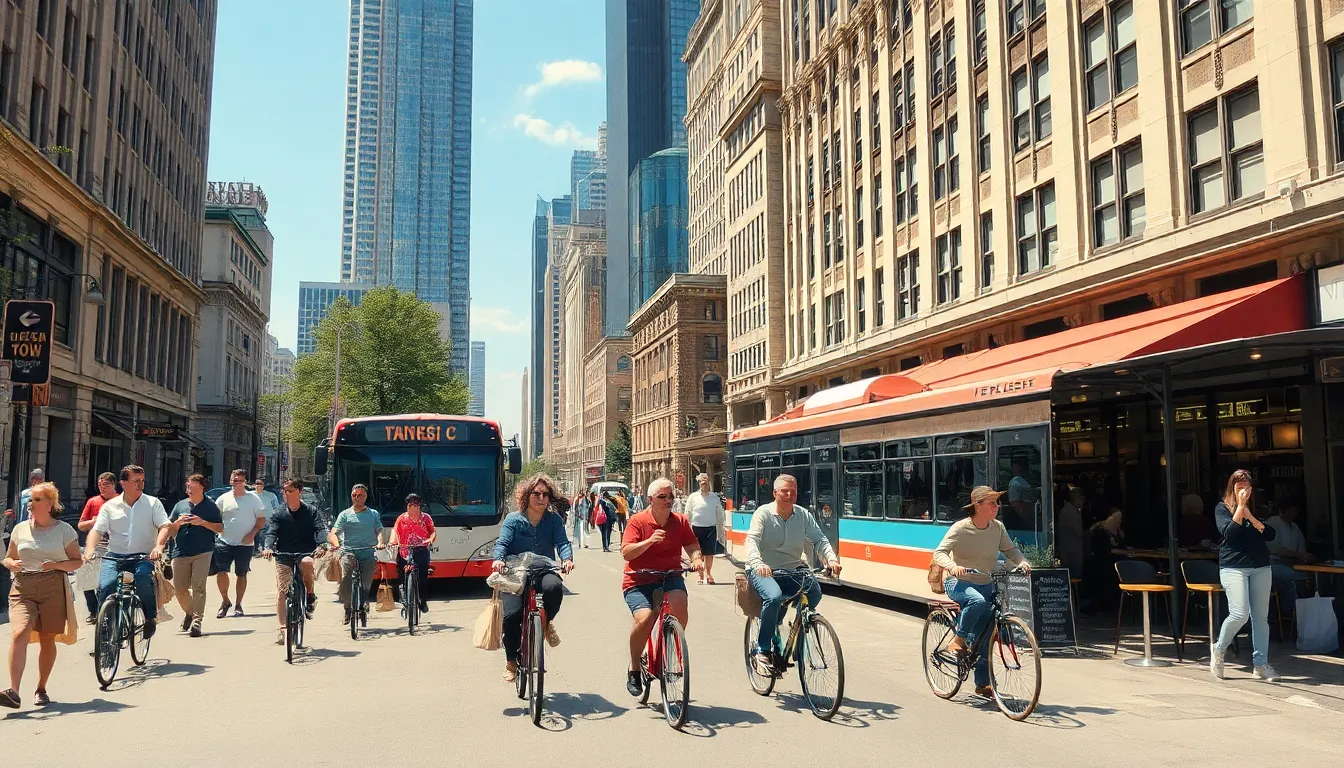Living in a city can feel like a roller coaster ride—thrilling, fast-paced, and sometimes a bit dizzying. But before you strap in, it’s crucial to check the ticket prices. City living costs can vary wildly from one urban jungle to another, leaving many scratching their heads and wondering if they should sell a kidney to afford rent.
Table of Contents
ToggleOverview of City Living Costs
City living costs vary significantly from one location to another. Rent often represents the most substantial expense for residents. For example, Manhattan’s average rent sits at approximately $4,000 per month, while a similar apartment in Austin averages around $2,500. Utilities, such as electricity and water, typically increase living expenses, averaging $150 to $200 monthly in larger cities.
Beyond housing, transportation costs also play a key role. Public transit passes can range from $80 in smaller cities to over $120 in major metropolitan areas. This transit reliance reduces costs associated with car ownership, including insurance and parking fees.
Grocery prices fluctuate as well. A basic grocery basket averages $300 monthly in urban areas, but some cities may see prices climb to $450. Dining out can further elevate monthly expenses. An average meal at a restaurant costs $15 in lower-cost cities while major cities can see the same meal priced at $25 or more.
Entertainment and leisure activities influence budgets as well. Monthly gym memberships range from $30 in smaller cities to over $100 in larger ones. Movie tickets can cost $12 in some cities but reach up to $20 in premium markets.
Medical care should also be accounted for in living costs. Health insurance premiums can vary widely across cities, with urban averages around $400 monthly. Monthly costs thus accumulate quickly, making it essential to evaluate various financial aspects before relocating.
Factors Influencing Living Costs

Living costs in urban areas depend on various factors that affect daily expenses. Analyzing these factors helps potential residents make informed financial decisions.
Housing Expenses
Housing expenses represent a significant portion of overall living costs. Rent prices can vary dramatically between cities. For example, Manhattan’s average rent is around $4,000 per month, while Austin’s average is approximately $2,500. Additionally, factors such as property taxes, maintenance fees, and neighborhood quality also play crucial roles in determining housing costs. Individuals seeking affordable options may find suburbs appealing, where rent often decreases significantly.
Transportation Costs
Transportation costs vary based on the city and available options. Public transit systems in major cities may charge between $80 and $120 for monthly passes. Accessibility to public transport can reduce the need for personal vehicles. Car ownership can incur expenses such as insurance, fuel, and maintenance. Urban dwellers often benefit from the convenience of rideshare services, which also add to transportation costs. Evaluating the overall transportation infrastructure is essential before moving to a new city.
Food and Grocery Prices
Food and grocery prices substantially impact living costs. Monthly grocery expenses generally range from $300 to $450, depending on location. Dining out further inflates these costs, especially in cities with trendy restaurants. Factors such as local food markets and dining options also influence expenditures. A lower-cost city may offer diverse, affordable dining selections, while higher-cost cities often require budgeting for meal prices that rise dramatically. Balancing grocery shopping and dining habits promotes financial stability.
Comparing Major Cities
Understanding living costs in major cities helps individuals make informed decisions about relocation. Each city presents unique financial challenges and opportunities.
City A
In Manhattan, average rent stands at approximately $4,000 per month, making it one of the most expensive locations in the U.S. Utilities, transportation, groceries, dining out, and entertainment contribute significantly to monthly expenses. Public transportation fees run between $120 and $130, while grocery costs range from $400 to $500. Dining out can escalate quickly, especially in popular neighborhoods. High-quality medical care adds to the overall costs but remains essential for residents.
City B
Austin offers a more affordable living experience with average rent around $2,500 monthly. Transportation costs are reasonable, with public transit fares averaging $80. Groceries tend to range from $300 to $400, allowing for more budget-friendly options compared to larger cities. Dining options provide a mix of affordability and upscale venues, influencing monthly dining expenses. Overall, residents in Austin enjoy a comfortable lifestyle without breaking the bank.
City C
San Francisco presents challenging living costs, with average rent soaring to about $3,500 per month. Transportation expenses incur around $100 monthly, making it crucial to budget accordingly. Grocery prices can hit $450, driving many to seek affordable alternatives. Dining out ranges widely, particularly in trendy districts. Medical care remains vital, yet often comes with higher premiums. Navigating these expenses requires careful planning for potential residents.
Tips for Managing Living Costs
Assessing personal finances accurately can help manage living costs effectively. Maintaining a budget plays a crucial role in identifying areas for savings. By tracking monthly expenses, individuals can pinpoint overspending on items like dining out or entertainment.
Consider utilizing public transportation to reduce commuting costs. Rideshare services may offer convenience but can accumulate high expenses over time. Individuals can benefit from exploring various transit options to find the most economical solution.
Grocery shopping smartly can lead to significant savings. Prioritizing fresh produce and bulk items often results in lower overall expenses. Comparing prices at different stores may yield better deals and help individuals stick to their budget.
Looking for community resources can also aid in managing living costs. Many cities provide food banks, clothing exchanges, and community events with free activities. Engaging with local resources can enhance quality of life while being budget-conscious.
Networking with local residents can unlock valuable insights into affordable living. They often have firsthand knowledge about deals on housing, dining, or entertainment that newcomers might miss. Combining efforts with others to share costs, such as rent or groceries, can lead to substantial savings.
Planning for inevitable increases in living costs should remain a priority. Researching trends in the specific city, like rising rents or utility rates, allows individuals to prepare financially. Being proactive in adjusting budgets ensures they can comfortably manage financial changes over time.
Navigating city living costs requires careful consideration and planning. With significant differences in expenses across various urban areas it’s crucial for individuals to assess their financial situations before making a move. By understanding the nuances of rent transportation and grocery prices one can make informed choices that align with their budget.
Implementing smart budgeting strategies and exploring community resources can enhance the living experience without breaking the bank. Ultimately being proactive about managing costs ensures a more sustainable and enjoyable city lifestyle.






